
For immediate assistance with crime scene cleanup, contact Bio-One of East Atlanta 24/7 at (470) 556-2330 for discreet, compassionate services. Our local team is proficient and equipped to manage all traumatic situations effectively.
It’s unnerving if your property has become the scene of a crime. It might have been a crime directed at you, or your property was the location of a random crime. Either way, it’s a traumatic event for you and others.
To make matters worse, the crime might have resulted in biohazard contamination. Biohazards are biological materials that pose a threat to human health.
The following types of crimes often result in biohazardous conditions:
In all these scenarios, specialized cleaning and decontamination methods are required to restore the area and safely prevent other health risks.

If a crime resulting in a biohazard has occurred on your property, here are the steps you should take:

The cleaning of a crime scene is typically handled by specialized crime scene cleanup teams rather than law enforcement or crime scene investigators. These teams are trained in dealing with biohazardous materials and have the expertise to clean and disinfect areas affected by a crime safely. The process includes several key elements:
Crime scene cleanup teams operate with a high degree of professionalism and sensitivity. They understand the emotional and traumatic nature of their work, especially in cases involving violent crimes. They also ensure compliance with all relevant health and safety regulations.
In most cases, the property owner is responsible for arranging and paying for these services. However, some insurance policies may cover the costs associated with crime scene cleanup.

Without the right training, equipment, and cleaning solutions, your cleanup efforts may be inadequate, leaving harmful remnants behind. Considering the infrequent use and high cost of proper equipment and chemicals, self-cleaning isn't cost-effective.

Professional crime scene cleanup companies should possess several essential qualifications and attributes to safely and effectively handle their work's complex and sensitive nature. These include:
Managing a biohazardous crime scene extends beyond just the immediate cleanup. It involves understanding the risks, following the right procedures, and ensuring that the area is returned to a safe and habitable state. This process is about eradicating visible signs of crime and safeguarding the health and well-being of those who may come into contact with the area.
Dealing with a crime scene on your property is a multifaceted challenge. It requires a careful balance of immediate action, adherence to legal procedures, and emotional resilience. Following the steps outlined above, property owners can navigate these difficult waters with a clearer understanding and a sense of preparedness. Remember, the goal is to clean up, heal, and recover from the incident.
For immediate assistance with crime scene cleanup, contact Bio-One of East Atlanta 24/7 at (470) 556-2330 for discreet, compassionate services. Our local team is proficient and equipped to manage all traumatic situations effectively.
Tips when calling for cleanup.
What is involved in crime scene cleanup?
Crime scene cleanup involves removing and decontaminating biological and hazardous materials from a crime scene. This includes blood, bodily fluids, and tissue cleanup.
How much does crime scene cleanup cost?
The cost of crime scene cleanup varies depending on the extent needed, but it typically ranges from $1,000 to $5,000.
Are your crime scene cleanup services available 24/7?
Yes, we offer 24/7 emergency services to respond to crime scenes promptly.
Does insurance cover crime scene cleanup?
In some cases, homeowner's insurance or crime victim compensation programs may cover the cost of crime scene cleanup. It's advisable to check with your insurance provider.
How long does a typical crime scene cleanup take?
The time required for crime scene cleanup varies based on the severity of the scene. It can range from a few hours to several days.
Are your crime scene cleanup technicians trained and certified?
Our crime scene cleanup technicians undergo specialized training and certification to handle biohazardous materials and follow strict protocols safely.
What types of biohazards are cleaned during crime scene cleanup?
Crime scene cleanup addresses biohazards like blood, bodily fluids, tissue, and other potentially infectious materials.
Can I clean a crime scene myself?
It is strongly discouraged to clean a crime scene yourself due to the risk of biohazard exposure. It's safer to hire professional crime scene cleanup services.
How can I find a reputable crime scene cleanup company?
Look for companies with proper certifications, experience, and positive reviews. You can also ask for referrals from law enforcement or your insurance provider.
What safety measures are taken during crime scene cleanup?
Crime scene cleanup professionals wear personal protective equipment (PPE) and use specialized cleaning agents to ensure safety and thorough decontamination.

For immediate assistance with after-death cleanup, contact Bio-One of East Atlanta 24/7 at (470) 556-2330 for discreet, compassionate services. Our local professional cleanup team is proficient and equipped to manage traumatic situations effectively.
In the wake of losing a loved one, the world seems to pause, wrapped in a haze of grief and disbelief.
During this challenging and emotional time, the myriad of tasks and arrangements that need to be handled can feel insurmountable, a mountainous journey that one is ill-prepared to embark upon.
Yet, amidst the sorrow and the pain, these tasks beckon for attention, demanding a semblance of normalcy in a world turned upside down.
While specific circumstances surrounding a death can vary widely — from expected passings after long illnesses to sudden losses that leave us reeling — the essence of what needs to be done in the aftermath shares common threads.
This guide's purpose is not to add to the burden of your loss but to offer a gentle roadmap through the maze of practicalities that follow a loved one’s departure. This checklist serves as a starting point, a foundational guide to navigating the initial steps post-loss.
In the following sections, we will delve deeper into each item on the checklist, providing insights, tips, and resources to assist you at every step. Whether arranging the funeral, handling the deceased’s estate, or simply knowing your rights and the support available, this guide aims to lighten your load and offer clarity amidst confusion.
Let’s embark on this journey together, with compassion and understanding, as we explore the critical first steps after the loss of a loved one.

In the immediate aftermath of a loved one’s passing, one of the first considerations may be their wishes regarding organ donation. Giving can save or enhance the lives of many individuals, making it a significant decision.
Here’s how to proceed:
Begin by looking for official documentation indicating the deceased’s organ donation wishes. This is often found on a driver’s license, where a small symbol signifies their consent to be an organ donor. Additionally, an advanced healthcare directive or living will might contain specific instructions regarding organ donation.
If you discover that your loved one is an organ donor, it’s crucial to inform first responders, nurses, or doctors immediately. The timing is critical for organ donation, and healthcare professionals need to know as soon as possible to preserve the organs’ viability.
Organ donation is handled with the utmost respect and care for the donor and their family. It’s helpful to familiarize yourself with the process, including additional consent forms, discussions about which organs or tissues can be donated, and the steps involved in the donation procedure.
While it’s a profoundly personal decision, understanding the impact of organ donation can offer some comfort during this difficult time. Each organ donor can save up to eight lives, while tissue donations can significantly improve the lives of up to 75 people.
Making decisions about organ donation during a time of grief can be overwhelming. Don’t hesitate to seek support from hospital staff, organ donation organizations, or a trusted advisor who can provide information and guidance.
Ultimately, the decision to donate organs should align with the wishes of the deceased. If they had not expressed a decision about organ donation, the responsibility falls to the next of kin to make the decision, keeping in mind what they believe their loved one would have wanted.

When a loved one passes away at home without medical supervision, it’s crucial to know the immediate steps to take. This not only ensures that their death is legally documented but also that you’re guided through the initial stages of managing their passing.
Here’s what to do:
If the death was unexpected, your first step should be to call emergency services (911 in the United States). They will dispatch the necessary personnel to your location.
Clearly explain the situation to the operator, stating that your loved one has passed away at home and there was no medical supervision at the time of death. Provide any details about the deceased’s medical history or circumstances leading to their death that might be relevant.
The operator may provide specific instructions for you to follow. This could include not moving the deceased’s body or attempting to resuscitate if it’s clear the individual has passed away.
In many cases, especially if the death was unexpected, the police and medical personnel will be dispatched to the scene. They are involved in ensuring no foul play and documenting the occurrence officially.
Depending on the jurisdiction and circumstances of the death, a medical examiner or coroner may need to examine the body. If this is necessary, emergency services or the police will coordinate it.
The authorities on the scene will help guide you through the initial documentation needed. This might include a legal pronouncement of death, which is essential for funeral arrangements and the execution of the deceased’s will, and other legal matters.
Don’t hesitate to ask the responding authorities any questions you may have about the process. They can guide you through the immediate next steps, including who to contact next and how to handle the deceased’s body respectfully.
It’s understandably a highly emotional time, but try to remain calm and respectful as the authorities do their job. They are there to help you through this challenging moment and ensure everything is handled correctly and with dignity.

In the immediate aftermath of a loved one’s passing, ensuring the well-being of any dependents — whether children, elderly family members, or pets — is paramount. This adjustment period is critical, and managing their immediate needs with compassion and efficiency can help alleviate the stress during this challenging time.
Here’s how to approach it:
Finding a safe and comforting environment is essential if children are affected by the loss. Reach out to a close family member, friend, or caregiver whom the children know and trust. This person should be capable of providing care for at least 24–48 hours, allowing you time to manage immediate arrangements without added worry.
Depending on the children’s age, explain what has happened in a manner that is sensitive and appropriate for their understanding. Assure that they are being taken care of and that you will be there for them.
Consider these when making arrangements if the deceased had expressed specific wishes regarding who should care for their dependents or if unique family dynamics are at play. It’s important to honor these wishes as much as possible, provided they align with the best interest of the dependents.
Pets also feel the loss and may become anxious or stressed during this time. Arrange for them to stay with a friend, family member, or a pet care service that can give them the attention and care they need. Ensure the caregiver is informed about the pet’s routines, dietary needs, and medical conditions.
Ensure the temporary caregiver has all necessary information for children or pets, including emergency contact numbers, medical records, dietary restrictions, and favorite toys or comfort items. This helps maintain a sense of normalcy and comfort.
Ensure the children and the caregiver can reach you if needed. Open communication is critical to ensuring the dependents feel supported and cared for, even in your absence.
Use this time to start thinking about any long-term arrangements that might need to be made for the dependents’ care and well-being, especially in light of the family’s loss.

The task of informing others about the passing of a loved one is both delicate and necessary. It’s a step that invites support and shared grief but can also be emotionally taxing. Prioritizing who to contact immediately and who can wait is crucial in managing this task without becoming overwhelmed.
Here’s how to approach it:
Begin by contacting those closest to the deceased — spouses, children, siblings, and best friends. These individuals should hear the news from you directly rather than through social media or other indirect means.
For those in the closest circle, phone calls are the most personal and respectful way to convey the news. They allow for an immediate, compassionate exchange and offer an opportunity for mutual support.
If you find the task too overwhelming to manage, it is okay to ask a trusted family member or friend to help notify others. Choose someone close to the deceased who can handle the task with sensitivity.
After informing the immediate circle, list other friends, distant family members, colleagues, and acquaintances to contact. Organizing this list by priority or relation can help streamline the process.
Consider using email, text messages, or social media for the broader circle, especially if you need to notify a large group. A carefully worded message that conveys the news with respect can be appropriate. Remember to ask for discretion in spreading the news until all close family and friends have been personally informed.
People process grief in various ways. Be prepared for a range of emotions from those you notify, from shock and denial to immediate grief. Offer support where you can, and understand if some need space to process the news.
If funeral or memorial service details are available and you feel appropriate, you can share this information with those you notify. Otherwise, let them know that details will follow once arrangements have been made.
Remember notifying others also reminds you of your loss. It’s emotionally draining, so take breaks as needed and lean on others for support during this process.
Securing a legal pronouncement of death is a necessary formal step in the process following a loved one’s passing. This official declaration is the first legal recognition of death and is essential for many subsequent tasks, from arranging the funeral to settling the estate.
Here’s how to navigate this process:
A medical professional is responsible for pronouncing death. If the death occurred in a hospital or hospice, the attending physician would make the pronouncement. In cases where death occurs at home without medical supervision, a qualified professional such as a coroner or medical examiner may need to be involved.
Contact the attending physician, the hospital, or your local medical examiner’s office to obtain a legal pronouncement depending on where and how the death occurred.
Primarily, suppose the death occurred outside of a medical facility. In that case, the body might need to be examined by the medical examiner or coroner to determine the cause of death before a pronouncement can be made.
Once a death has been legally pronounced, you can request official death certificates from the hospital, physician, or your local vital records office or health department. These documents are crucial for many next steps in managing your loved one’s affairs.
Many institutions require an original death certificate to process changes after death (e.g., banks, insurance companies, and government agencies). Estimate how many copies you need and request them upfront to avoid delays. It’s not uncommon to need 10 or more copies.
The process for obtaining a legal pronouncement of death can vary significantly by location, especially regarding who is authorized to make the pronouncement and issue death certificates. Familiarize yourself with local laws and procedures to ensure compliance.
There may be a fee for each copy of the death certificate. While the initial cost might seem minor, it can add up if you require many copies. Plan for this expense in your budget.
Transparent and respectful communication can help streamline interactions with medical or government officials. Remember, these professionals are accustomed to assisting individuals in your situation and can often provide additional guidance.
In the immediate aftermath of losing a loved one, having a support system in place is crucial for both emotional and practical support. Grieving is a deeply personal process, yet it’s important to remember you don’t have to navigate this difficult time alone.
Here’s how to establish and utilize a support system effectively:
Identify family members and friends who can offer you emotional and practical support. Think about those who have been there for you in past times of need and who you feel comfortable relying on now.
Be open with your support network about what you’re going through and how they can help. Let them know whether you need someone to listen, help with funeral arrangements, or manage daily tasks like cooking or childcare.
Many tasks must be completed after a loved one’s death, from funeral arrangements to notifying banks. Divide these tasks among your support network based on each person’s strengths and availability. This approach helps manage the workload and allows everyone to contribute meaningfully.
Grief counselors, therapists, and support groups specialize in helping people navigate the complexities of grief. Don’t hesitate to reach out to these professionals for support. They can offer coping strategies, a compassionate ear, and a safe space to express your feelings.
Many communities have resources for grieving people, including support groups, workshops, and seminars. These resources can provide additional support and connections with others experiencing similar losses.
Sometimes, help comes from unexpected places. If someone offers assistance, consider accepting it. Whether a neighbor offering a meal or a colleague willing to handle some of your responsibilities, these gestures can provide significant relief.
Remember that taking care of yourself is not selfish. Grief can be physically and emotionally exhausting, so eating well, getting enough rest, and engaging in activities that nurture your well-being is crucial.
In moments of deep grief, it might be tempting to isolate yourself. However, staying connected with others, even in small ways, can provide a lifeline during this time. Regular check-ins with friends, family, or a support group can make a difference.
It’s essential to acknowledge the road you’ve embarked upon following the loss of a loved one. The journey through grief is deeply personal, marked by moments of profound sadness, reflection, and, eventually, healing. While the steps outlined in this guide aim to navigate the practical aspects of this journey, remember that the emotional and spiritual journey is equally important.
You may find moments of peace, healing, and hope as you continue your journey. Your loved one’s memory will always be a part of you, shaping your journey in ways seen and unseen. Embrace the journey ahead, with its myriad of emotions, as a testament to the love you shared and the resilience within you.
For immediate assistance with after-death cleanup, contact Bio-One of East Atlanta 24/7 at (470) 556-2330 for discreet, compassionate services. Our local professional cleanup team is proficient and equipped to manage traumatic situations effectively.
Resources For Those Left Behind After a Suicide Click here for suicide prevention and postvention resources.

For immediate professional hoarding cleanup service, contact Bio-One of East Atlanta 24/7 at (470) 556-2330. Your health and peace of mind are our top priorities. Let our expert local team help you restore your environment to a safe and clean condition.
When cleaning up a cluttered home, most people think of typical house cleaning tasks like dusting, vacuuming, and organizing. However, there's a significant difference between cleaning an untidy house and tackling the daunting task of hoarding cleanup.
Hoarding goes far beyond simple clutter and often presents complex challenges that require professional intervention.

One of the primary reasons hoarding cleanup is distinct from regular house cleaning is the presence of biohazard contamination. Biohazards can cause diseases in humans and can also cause other effects, such as poisonings, or provoke an allergic response.
Sometimes, hoarding animals (like cats) is part of the hoarder's compulsion. Animal hoardings are especially sensitive. Animal hoarding is unhealthy and dangerous for both the occupants of the space and the animals themselves. The combination of feces, urine, and unsanitary filth creates biohazards that risk the health of all living things in that space.
These biohazards found in a hoarder’s home pose serious health risks, including the spread of diseases and infections. Attempting to clean up such biohazards without proper protection can lead to serious health consequences.
Cleaning up biohazardous materials requires specialized training, equipment, and adherence to safety protocols. Professional hoarding cleanup teams are equipped with personal protective equipment (PPE), including masks, gloves, and suits to shield them from biohazard exposure. They follow strict protocols to ensure thorough decontamination and disposal, reducing the risk of disease transmission.
Hoarder homes provide ideal environments for pests and rodents to thrive. Accumulated clutter offers hiding spots and food sources for these unwanted guests. Rats, cockroaches, flies, and other pests are often lured to the house by animal waste and rotting food. These pests and rodents are biological agents that spread diseases to animals and humans living in these unsanitary conditions.
Rodent infestations are common in hoarding situations, with rodents finding shelter in the vast clutter and abundant food sources. Infestation of rodents in and around the home is the main reason disease spreads from rodents to people. In addition, these pests can cause structural damage and contaminate surfaces with feces and urine. Attempting to handle a rodent infestation during a hoarding cleanup without professional expertise can worsen the problem.
Removing pests without professional help can lead to inadequate solutions and potential harm. Professional hoarding cleaners are trained to identify and address pest infestations effectively. They use appropriate extermination methods and ensure that all infested areas are thoroughly cleaned and sanitized.
Hoarding environments often suffer from poor ventilation and excess moisture due to blocked windows and plumbing issues. These conditions create a breeding ground for mold. Mold growth is unsightly and hazardous to health, causing respiratory problems and allergies.
For some people, mold can cause a stuffy nose, sore throat, coughing or wheezing, burning eyes, or skin rash. People with asthma or who are allergic to mold may have severe reactions. Immune-compromised people and people with chronic lung disease may get lung infections from mold.
Mold spores are airborne and can quickly spread to other areas of the home, leading to extensive contamination. Attempting to address mold growth in a hoarding environment without proper training and equipment can result in inadequate removal and the potential for health issues.
Removing mold from hoarded spaces requires protective gear, specialized cleaning agents, and remediation techniques. Professional hoarding cleanup teams are equipped to handle mold removal safely.
Professional hoarding cleaners conduct thorough mold assessments and use industry-standard procedures for mold remediation. They ensure that affected areas are cleaned, sanitized, and ventilated to prevent mold regrowth.
Hoarder homes are at a higher risk of fire hazards due to blocked exits, overloaded electrical circuits, and flammable materials. In such cluttered environments, fires can spread rapidly, endangering lives and property. The fire risk will be heightened if the hoarder collects many flammable materials.
Fires in hoarding environments can have devastating consequences due to obstructed pathways and flammable materials like paper, cardboard, and chemicals.
Attempting to address fire hazards without professional guidance can lead to unsafe conditions and increased risks. Professional hoarding cleanup teams prioritize safety by identifying fire hazards, clearing obstructed exits, and safely disposing of flammable materials. They have experience managing fire risks during cleanup to protect their team members and the property.
Hoarded homes often contain piles of belongings that reach unsafe heights, posing a significant risk of injuries. These unstable piles of materials can collapse and injure you as you attempt to declutter and clean the house. Navigating cluttered spaces can lead to slips, trips, and falls, resulting in bruises, fractures, or more severe injuries.
In addition, hoarders scatter items haphazardly all over the place, increasing the chances of you tripping and falling and sustaining fractures, wounds, and sprains. It’s also dangerous to try lifting heavy items on your own, which is another reason you need help from professionals with experience in hoarding cleanup.
Professional hoarding cleaners are trained in safety protocols to minimize the risk of personal injuries during cleanup. They use caution and appropriate equipment to access cluttered areas safely.
Excessive dust accumulation, mold spores, and other particulates in hoarded homes result in poor air quality. Breathing in these pollutants can lead to respiratory issues, exacerbating preexisting conditions like asthma. Removing these contaminants from the air and surfaces is crucial for creating a safe and habitable environment.
Hoarding environments often have compromised ventilation due to blocked windows and cluttered spaces. This leads to stagnant air and a buildup of dust, allergens, and potentially harmful particles. Attempting to improve air quality without the proper equipment and techniques can be ineffective.
Professional hoarding cleaners assess indoor air quality, implement ventilation strategies, and use air purifiers to remove pollutants. They ensure that the air in the cleaned space is safe to breathe, reducing health risks.

Cleaning a hoarded space involves much more than traditional cleaning supplies. Hoarding cleanup requires specialized tools, cleaning agents, and equipment not typically found in household cleaning arsenals. Heavy-duty cleaning agents are also needed to tackle biohazard contamination, mold growth, and stubborn stains.
Professional hoarding cleaners can access commercial-grade cleaning solutions that are effective against various contaminants. These specialized cleaning agents are essential for restoring a hoarded space to a safe and habitable condition.
Personal protective equipment (PPE) is crucial when dealing with biohazardous materials and hazardous environments. Professional hoarding cleaners wear appropriate PPE, including masks, gloves, and suits, to protect themselves from exposure to biohazards and other contaminants. This level of protection is necessary to ensure their safety during the cleanup process.
Hoarding cleanup often involves extensive labor, including removing heavy clutter and debris. Professional hoarding cleaners use specialized equipment, such as heavy-duty trash bags, dumpsters, and hauling vehicles, to remove waste efficiently. They also have the training and experience to handle items safely, reducing the risk of injuries.
In addition to physical tools, professional hoarding cleaners have access to industry-specific knowledge and expertise. They understand the complexities of hoarding disorder and can approach cleanup with sensitivity and professionalism. They know how to communicate with hoarders and their families, ensuring a smoother and more compassionate process.
Hoarding cleanup is not just about removing clutter; it's also about creating a safe and supportive living environment for the individual affected by hoarding disorder. Professional hoarding cleaners understand the importance of this aspect of their work.
They go beyond the physical cleanup by emotionally supporting the hoarder and their family. They approach the situation empathetically, respecting the hoarder's feelings and boundaries. This compassionate approach helps build trust and cooperation, making the cleanup process smoother and more successful.
Furthermore, professional hoarding cleanup teams can offer guidance on preventing relapse and maintaining a clutter-free environment. They educate the hoarder and their family about organization techniques, cleaning routines, and ways to manage stress and anxiety.
Hoarding cleanup can involve legal and ethical considerations, emphasizing the need for professional expertise. Here are some key points to consider:

Cleaning up a hoarding mess is a unique and complex task that should never be approached as a DIY project. The presence of biohazard contamination, pest infestations, mold growth, fire hazards, unsafe air quality, and the need for professional tools and chemicals make hoarding cleanup a job for experts. Attempting to tackle hoarding cleanup without professional assistance puts your health and safety at risk and may lead to incomplete or ineffective results.
In addition, professional hoarding cleanup is not just about removing clutter and addressing the visible hazards; it's a comprehensive process that considers the psychological aspects of hoarding disorder and aims to create a safe and supportive living space. By entrusting this challenging task to experts who understand the physical and emotional complexities of hoarding, you can ensure a successful and lasting resolution.
Incorporating legal and ethical considerations highlights the complexity of hoarding cleanup beyond its physical aspects. It underscores why professional expertise is essential to navigate the legal landscape, ensure ethical treatment, and protect the interests of all parties involved.
When facing a hoarding cleanup project, it's crucial to contact professional hoarding cleaners with the expertise, experience, and resources to handle these challenging situations safely and efficiently. Don't let hoarding cleanup overwhelm you; trust the professionals to restore safety and cleanliness to the affected space.
Click for hoarding cleanup resources and guides.
For immediate professional hoarding cleanup service, contact Bio-One of East Atlanta 24/7 at (470) 556-2330. Your health and peace of mind are our top priorities. Let our expert local team help you restore your environment to a safe and clean condition.
Hoarding cleanup requires specialized training to handle the complexities safely and effectively, such as removing hazardous materials and navigating challenging environments.
Hoarding cleanup involves dealing with large volumes of items, potential hazards, and emotional challenges beyond regular cleaning.
Potential hazards include mold, pests, structural damage, sharp objects, and hazardous chemicals.
While family members may assist, professionals are better equipped with the tools and knowledge to handle hoarding situations safely.
The duration depends on the severity and size of the hoard, but professionals work efficiently to restore safety and cleanliness as quickly as possible.
Professionals aim to conduct the cleanup process respectfully and compassionately, working closely with the homeowner to make informed decisions.
Skilled teams follow strict protocols to safely identify, handle, and dispose of hazardous materials in compliance with regulations.
They often undergo specialized training in handling hazardous materials, biohazards, and cluttered environments to ensure safe and effective cleanup.
Legal issues regarding property rights and safety regulations can arise, so it's vital to consult professionals familiar with these aspects.
A: Approach the situation with empathy and encourage them to seek professional help to assist with the cleanup and any underlying issues.

For immediate assistance with expert cleanup after a deadly accident, contact Bio-One of East Atlanta 24/7 at (470) 556-2330 for discreet, compassionate services. Our local team is proficient and equipped to manage all traumatic situations effectively.
A fatal accident is an unforeseen incident that results in the death of at least one individual. These tragic events can occur in various settings and involve different activities, profoundly impacting families, communities, and sometimes entire societies.
Understanding the common causes of deadly accidents is crucial for prevention and safety measures.
Here are some of the most frequent causes:
One of the leading causes of fatal accidents globally involves vehicles such as cars, motorcycles, bicycles, and pedestrians. Factors include speeding, impaired driving due to alcohol or drugs, distracted driving, and adverse weather conditions.
Fatal accidents can occur in workplaces, especially in construction, manufacturing, and agriculture. Common causes include falls from heights, machinery accidents, exposure to hazardous substances, and vehicle-related incidents.
Accidents and explosions can lead to fatalities, often resulting from residential fires, industrial explosions, or wildfires. Causes may include electrical faults, gas leaks, improper handling of flammable materials, and arson.
Fatal drownings occur in swimming pools, natural bodies of water, and at home (e.g., bathtubs). Lack of supervision, inability to swim, and alcohol consumption are significant factors.
Accidental poisoning, often due to the ingestion of toxic substances, overdose of drugs, or exposure to carbon monoxide, can be fatal, particularly in children and the elderly.
Falls, especially among the elderly, can lead to fatal injuries. They can occur at home, public spaces, or work and often result from slippery surfaces, inadequate safety measures, or health conditions affecting balance.
By identifying and understanding these common causes, individuals and communities can take proactive steps to mitigate risks and enhance safety protocols, aiming to reduce the occurrence of fatal accidents and their devastating effects.

Following a fatal accident, the cleanup process is a crucial yet often overlooked aspect of post-accident management. It involves a series of meticulous and sensitive operations to restore the site to its pre-accident condition.
Here's an expanded view of the roles and challenges faced by the unseen heroes behind the scenes:
The individuals and teams involved in the cleanup after fatal accidents perform an essential service, working diligently and compassionately to restore safety and normalcy.
Their role is critical to the broader emergency response and recovery effort. Yet, their work often remains in the shadows, unseen by the public but deeply appreciated by those directly affected by the tragedy.

Understanding the intricacies of fatal accident cleanup is essential for recognizing its vital role in post-accident response and recovery.
Here's an expanded view that highlights key components and considerations involved in the process:
Fatal accident cleanup is a complex and critical service requiring technical expertise, regulatory compliance, and compassionate care.
Understanding these aspects illuminates the importance of this work and the dedication of the teams that perform it. These teams ensure public health and safety while providing dignity to those who have lost loved ones.

The role of professional cleanup teams is pivotal in managing the aftermath of incidents involving biohazardous materials, such as fatal accidents. These teams specialize in dealing with situations that require technical proficiency and a high degree of empathy and understanding.
Below are key points that expand on their role:
Professional cleanup teams play a critical role in the aftermath of fatality incidents. They offer their technical expertise in making areas safe and clean and compassion and understanding during a family's distress.
Their work is essential in helping communities recover from tragic events by ensuring environments are physically and emotionally restored.

The emotional impact of cleanup crews' work is profound, affecting not only the families of the deceased but also the broader community and the professionals themselves. While less visible, this aspect of their job is equally important to the physical cleanup.
Here are key points that highlight the emotional significance of their role:
The emotional impact of cleanup crews' work is a testament to the profound influence of care, dignity, and respect on the healing process. They embody the role of caretakers in the truest sense, not only through their cleanup efforts but also through the compassion and support they extend to those mourning the loss of a loved one.

The significance of addressing environmental and public health considerations after biohazard incidents cannot be overstated. Professional teams' prompt and thorough cleanup are pivotal in mitigating risks and safeguarding communities.
Below are key points that highlight the importance of these considerations:
The role of professional cleanup teams in addressing environmental and public health considerations is fundamental to the well-being of communities following incidents involving biohazards.
Through their expertise and dedication, these teams ensure that the areas affected by such incidents are promptly returned to safe, clean conditions, thereby protecting public health and the environment.

When faced with needing a professional fatal accident cleanup service, choosing the right company is crucial. This service requires technical competence, sensitivity, and respect for the emotional context of the situation.
Here are vital factors to consider when selecting a company for fatal accident cleanup:
Choosing the right fatal accident cleanup service involves evaluating their expertise, responsiveness, and sensitivity to the needs of those affected.
Considering these factors, you can select a company that will handle the situation professionally, compassionately, and respectfully.

Choosing Bio-One for fatal accident cleanup means opting for a service that combines expertise with empathy. This choice ensures a professionally cleaned area and a compassionate approach to the emotional distress such incidents can cause.
Bio-One stands out as the preferred choice for fatal accident cleanup. Its service respects the technical and emotional aspects of such difficult situations.
For immediate assistance with expert cleanup after a deadly accident, contact Bio-One of East Atlanta 24/7 at (470) 556-2330 for discreet, compassionate services. Our local team is proficient and equipped to manage all traumatic situations effectively.
Tips when calling for cleanup.
A fatal accident is an unforeseen incident resulting in the death of one or more individuals, often leaving a significant impact on families and communities.
Common causes include traffic collisions, workplace incidents, fires and explosions, drowning, poisoning, and falls.
It involves removing biohazardous materials, thoroughly disinfecting the site, and restoring the area to a safe condition while respecting the deceased and their families.
Professional cleanup is crucial to eliminating the health risks posed by biohazardous materials, restoring the site to a safe state, and providing compassionate support to affected families.
Cleanup teams should be trained and certified in handling biohazardous materials, adhere to safety regulations, and demonstrate compassion and sensitivity.
Cleanup teams should be called as soon as possible to minimize health risks and restore the area for public access.
The cleanup must adhere to strict health and safety regulations, including those set by OSHA and the EPA, and ensure the disposal of hazardous waste properly.
Cleanup teams approach their work with compassion and sensitivity, offering support and ensuring that the cleanup process does not add to the distress of the affected families.
Families should seek services with experience, certification, quick response, compassionate service, comprehensive cleanup capabilities, and adherence to regulations.
Some companies offer aftercare support or can refer families to grief counseling and other services, providing holistic support beyond the cleanup.

There is no timetable on grief, so it’s impossible to say how long it will take for your life to begin to feel normal again.
There may be times when it feels like nothing will ever be right again, but try to remind yourself that this feeling is not forever. You will recover, it just takes time.
It’s hard to be patient with recovery, especially as life keeps moving on around you and pressuring you to continue as normal, but you deserve the time to heal and adjust from this traumatic loss, so allow yourself the time and space to do so.
There are, however, some things you can do to aid in your recovery process and ensure you are on the best possible path toward healing:

It may feel as though there’s nothing a therapist could tell you that you don’t already know, but therapists do a lot more than just talk. A good therapist can:
Professional help won’t cure your grief, but it can help you feel like you have more control over where the grief is taking you.
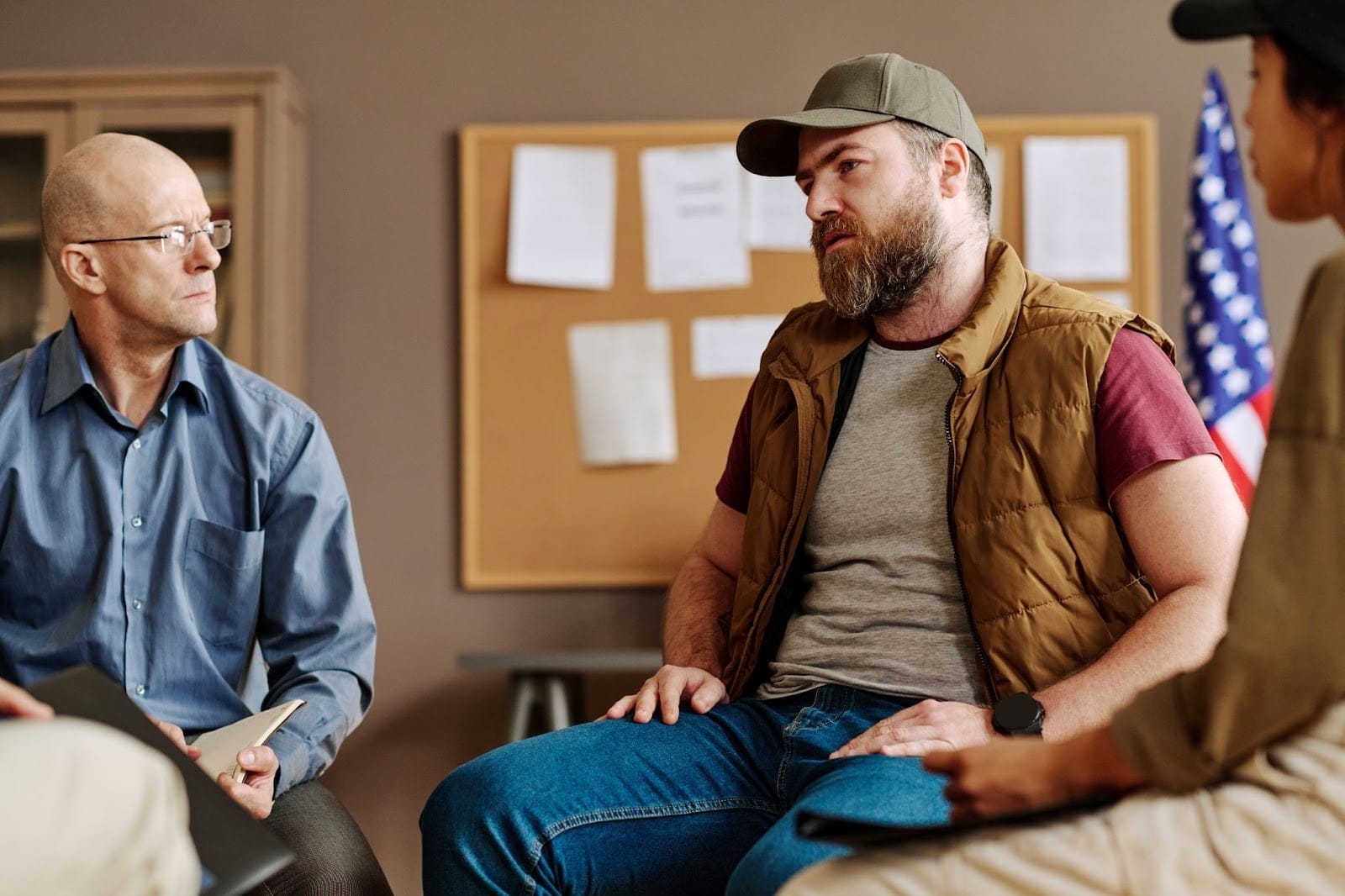
Because suicide is unfortunately so common, there are many survivors who are going through something very similar to you.
Finding a support group will help you to connect with them. Like therapy, this can give you a forum to work through complicated feelings—but more importantly it can help you feel less alone in what you’re going through.

Support groups are excellent, but it is also a good idea to form a tighter circle of support with those who are grieving the same person you are.
With this group you can share more specific feelings about the situation, as well as find positive ways to honor your loved one together.
Eventually you may find yourself laughing together over happy memories of the person, which is a huge and important step on the road to recovery.
Some people are able to find a greater sense of peace and understanding through personal faith practices.
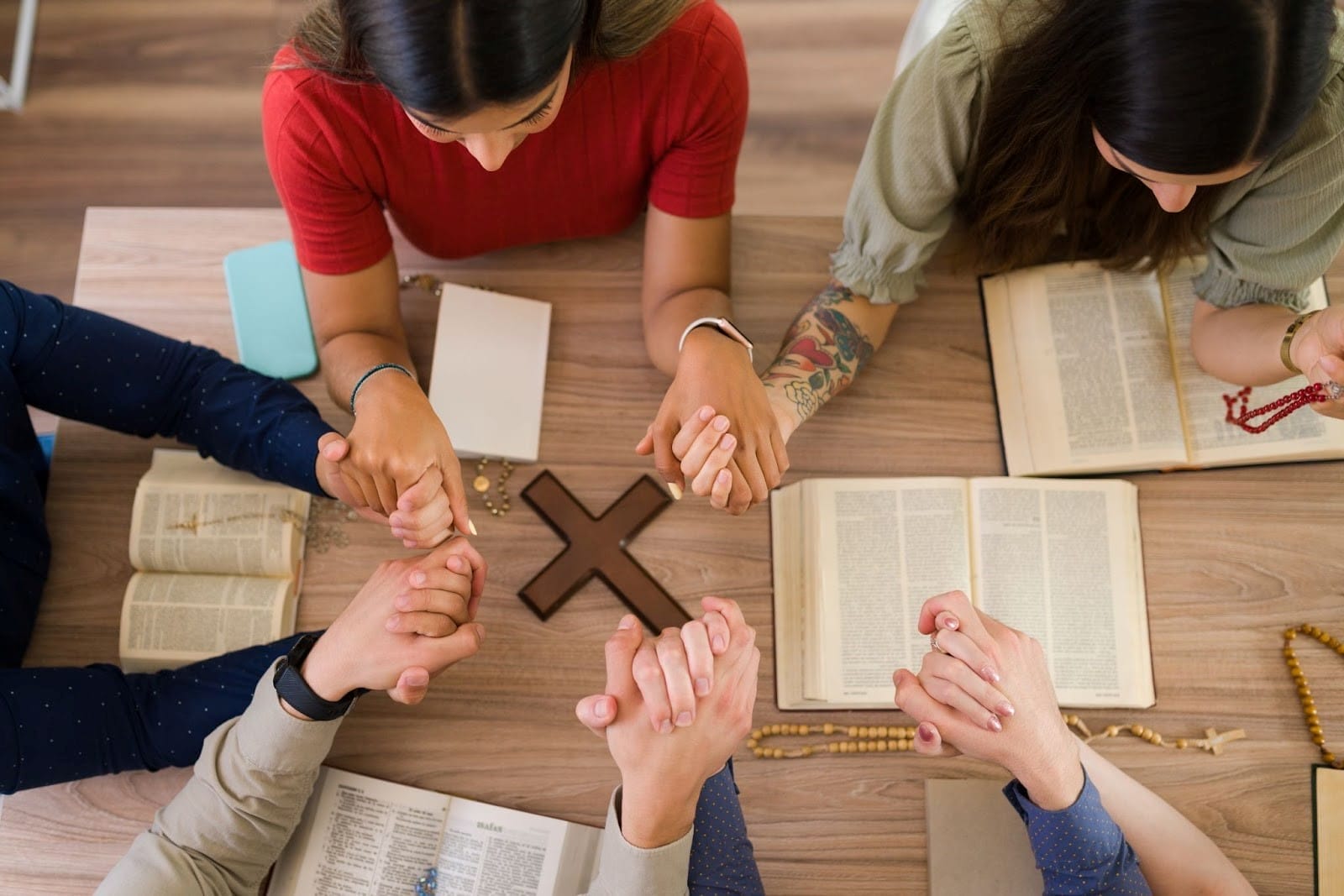
Whether it’s organized religion or general spiritual practices, finding spiritual meaning in life and death can be hugely beneficial.
However, be aware that some religious belief systems condemn suicide as a sin.
Carefully consider whether these beliefs will aid in your recovery or if another faith would prove more forgiving and uplifting.

As time goes on, you may find that birthdays, anniversaries, and holidays are especially difficult. During these times, it can be helpful for you and other loved ones to find special ways to honor the person you lost.
These can be small acts, like sharing stories on holidays, or larger things, like celebrating their birthday. Mark the occasion with whatever feels right.
Beginning new traditions is a good way to keep your loved one close to you even as your lives begin to move forward without them.
Above all, community and connection are what will be most helpful in getting you through this time.

Resist the urge to disconnect from others. Do what you can to reach out. Be sure to accept the help of those who are reaching out to you.
There are a lot of other people going through the same tragedy as you, and you can support one another through this difficult journey.
There are also likely people who care about you that aren’t connected to the tragedy who you can lean on.
Even if you aren’t looking for someone to console you, sometimes finding distractions from the pain can be helpful in allowing yourself the space to heal.
In the wake of a suicide, there is often an increase in suicidal thoughts and impulses in loved ones as well. Often, these thoughts are a result of your brain trying to cope with the loss. It can become a genuine risk—particularly among families and friend groups with high rates of mental illness.
To kep everyone safe, have a close community of survivors and encourage everyone to be open with their feelings, especially about suicidal thoughts.
The more your community unites to support and protect each other, the better the chance of preventing this tragedy from happening again.

Your grief may have you feeling a little stuck in time right now—unable to move forward in any meaningful way. As time passes this will begin to ease and you will find yourself beginning to move on.
When the forward motion starts again, it is an instinct for some to try to hang onto their grief out of a sense of duty to the person they lost, or fear that letting go will mean forgetting.
The idea of truly moving on can be scary. If you’re struggling with the transition, volunteering your time to a cause dedicated to preventing suicide and supporting survivors like you can help to ease some of the guilt and fear.
Working to do some good in the name of your lost loved one serves as an excellent bridge to carrying on with your life while still keeping their memory with you.

There may still be bumpy roads ahead. Grief is complicated and can come in spurts and waves, but as you start feeling a little more whole give yourself permission to begin living again.
Little by little, life and joy will return to you, and though the ache may not ever fully go away, things will get better.
Suicide leaves deep wounds in families and communities. The scars will always be there. However, with time and support, you will be able to reclaim happiness for yourself and begin living again.

There is no right answer for how you should be feeling following the suicide of someone close to you.
Grief is complex, and it’s rare that any two people will experience it in the same way.
Just know that whatever you’re feeling is okay.
Some of the most common emotions people report feeling when coping with a loved one’s suicide include:
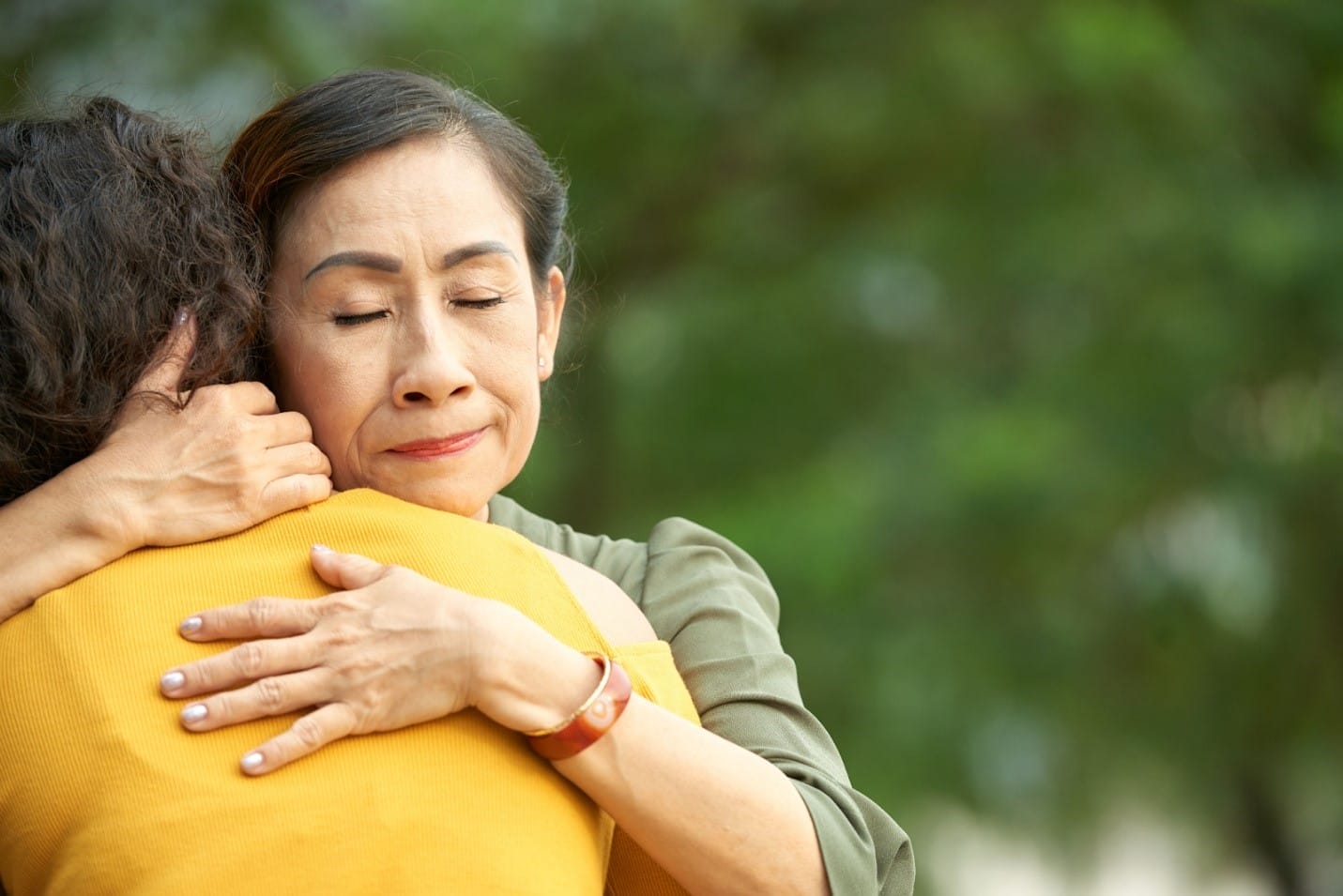
Especially in the early aftermath, it’s common for people to feel numb, disconnected, and distracted. This shock may last for a long time. You may feel a sense of detachment from reality until you are better able to process what happened.
Depression following a traumatic loss can be almost identical to the symptoms of clinical depression. There may be a lack of energy and motivation, difficulty sleeping, loss of appetite, and overwhelming sadness.
This may ease with time, but in some cases it can mark the onset of an ongoing depressive disorder.

Our brains often try to find someone to blame to protect us from the impact of a loss.
You may be angry at yourself or another loved one for not noticing or acting sooner, or at whatever systems you believe failed the victim.
You may even feel angry at the deceased person for abandoning you or for upending your life with their decision.

If the suicide took place after a long and difficult struggle with mental or chronic physical illness, you may feel a sense of relief that it’s over—particularly if their illness put frequent strain on their relationships.
This is more common than you think, and a lot of people experience this, but you may begin to feel like you’re a uniquely bad person for feeling this way.
This can easily cycle into guilt.
You may begin to convince yourself that you secretly wanted the victim to be gone or feel selfish for your relief over not having to care for them or manage their difficult emotions anymore.
Human relationships are complicated, as is grief, so try to remember that you are not the first person to ever feel this way. Relief does not mean that you’re happy they’re gone, just that you wish something could have been different while they were still around.
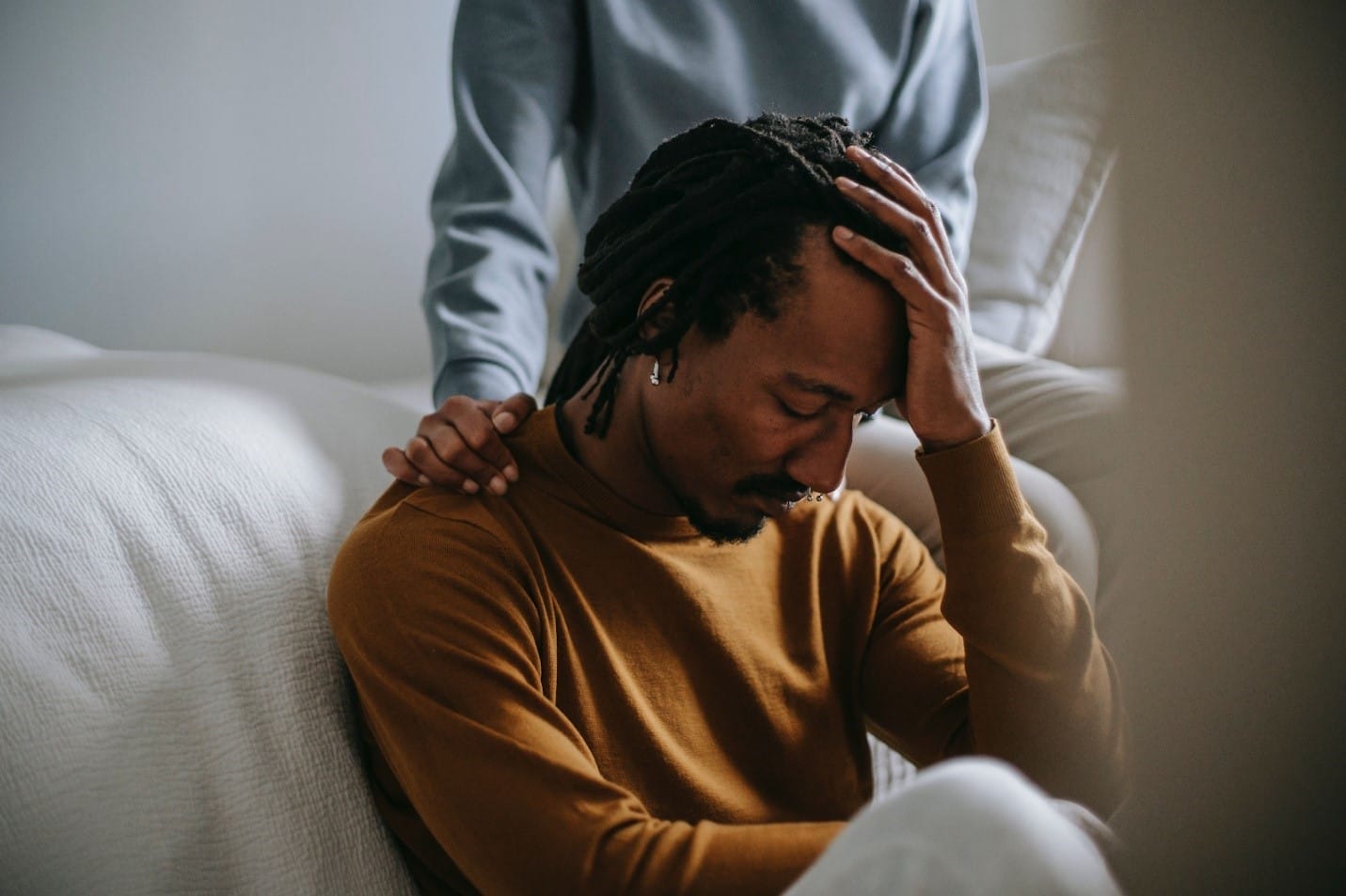
Loss can often feel senseless, and so you may fall into a cycle of “if only” to find reason for what happened. Guilt can also result from any other emotion you may find yourself feeling...
Guilt is complex and is perhaps the most common feeling for close loved ones of a suicide victim to experience.

You may experience one of these feelings overwhelmingly throughout your grieving process, or perhaps all of them in some capacity at different times. You may also be feeling something entirely different from any of these.
However your grief is manifesting, there is no wrong way to feel at a time like this. More importantly, you are likely not the only one feeling this way.

People tend to mask when they are feeling something they believe to be inappropriate for the situation, but if you are feeling confusion, guilt, and anger at this tragedy, it’s likely another loved one is struggling with the same feelings.
It may be helpful to talk to others who are experiencing this loss with you. Some may need more space to process their feelings on their own, but others can benefit greatly from sharing their feelings with each other and holding space for whatever emotions are brought to the table.
Finding solidarity in the way that you are grieving can make the process feel a lot less lonely.

Survivors often end up torturing themselves trying to understand why their loved one chose to end their life. It’s very easy to get caught up in replaying the last interactions you had with a person before their suicide to dig out clues that might help make sense of it.
The truth of the matter is that suicide is complicated with no singular explanation for why it happens.
However, a framing that may help it to settle a little better in your mind is this: At the end of all things, your loved one died of an illness.
Most, if not all, victims of suicide were suffering from an acute mental illness. Mental illness causes the chemicals and neurotransmitters in the brain to malfunction in ways they are unable to control.

It was their illness that caused them to feel the compulsion to end their life.
A huge factor of mental illnesses like Depression, Bipolar Disorder, Schizophrenia, and others are that they fundamentally distort a person’s perception.
In their book After Suicide Loss: Coping With Your Grief, Psychologists Bob Baugher and Jack Jordan explain:
“Medical research is also demonstrating that major psychiatric disorders involve changes in the functioning of the brain that can severely alter the thinking, mood, and behavior of someone suffering from the disorder…
The illness produces biological changes in the individual that create emotional and physical pain (depression, inability to take pleasure in things, hopelessness, etc.) which contribute to almost all suicides.”

Often people who suffer with suicidal ideation don’t actually want to die, they simply want the anguish or emptiness that their brain is inflicting on them to stop, and for some, death feels like the only way out.
It may feel like the only thing they can control in a situation that feels fully out of their control.
Mental illness is treatable just as any mental illness is treatable—but some people still succumb to their cancer even with treatment, while others recover and go on to live a full life.

Your loved one did not choose to become ill, and they would not have chosen to end their life had their illness not been pushing them to do so.
You do not need to wonder why their friends and family weren’t enough to keep them around, or why they would want to give up on whatever promising future they may have had. Illness does not have a sense of any of those things—and in the end, their illness is what ended their life.
Understanding this will not make the loss hurt any less, but it may help to reconcile some of the confusion so you can grieve a little more peacefully.

An unfortunate inevitability following a suicide is that you will probably have to tell a lot of people the news about what happened.
By this point you’ve likely already gone through the difficult process of informing immediate family members and friends.
However, it may also fall on you to inform the victim’s employer, teachers, or extended family who may have been out of the direct loop about why your loved one is no longer around. These can be emails if you are not feeling up to calling, and the messages can be direct and brief.

What may be more difficult to handle are conversations with members of your extended community.
In the aftermath of any premature death, people outside of the deceased person’s direct social circle will always want to know what happened. Obituaries often leave out the cause of death, so there will be a lot of questions.
Approach these discussions however you need to.
Many survivors find it helpful to just be straightforward with anyone who asks, but you are not obligated to be. Do not feel as though you are being difficult or unpleasant if you need to tell someone you don’t want to discuss it.
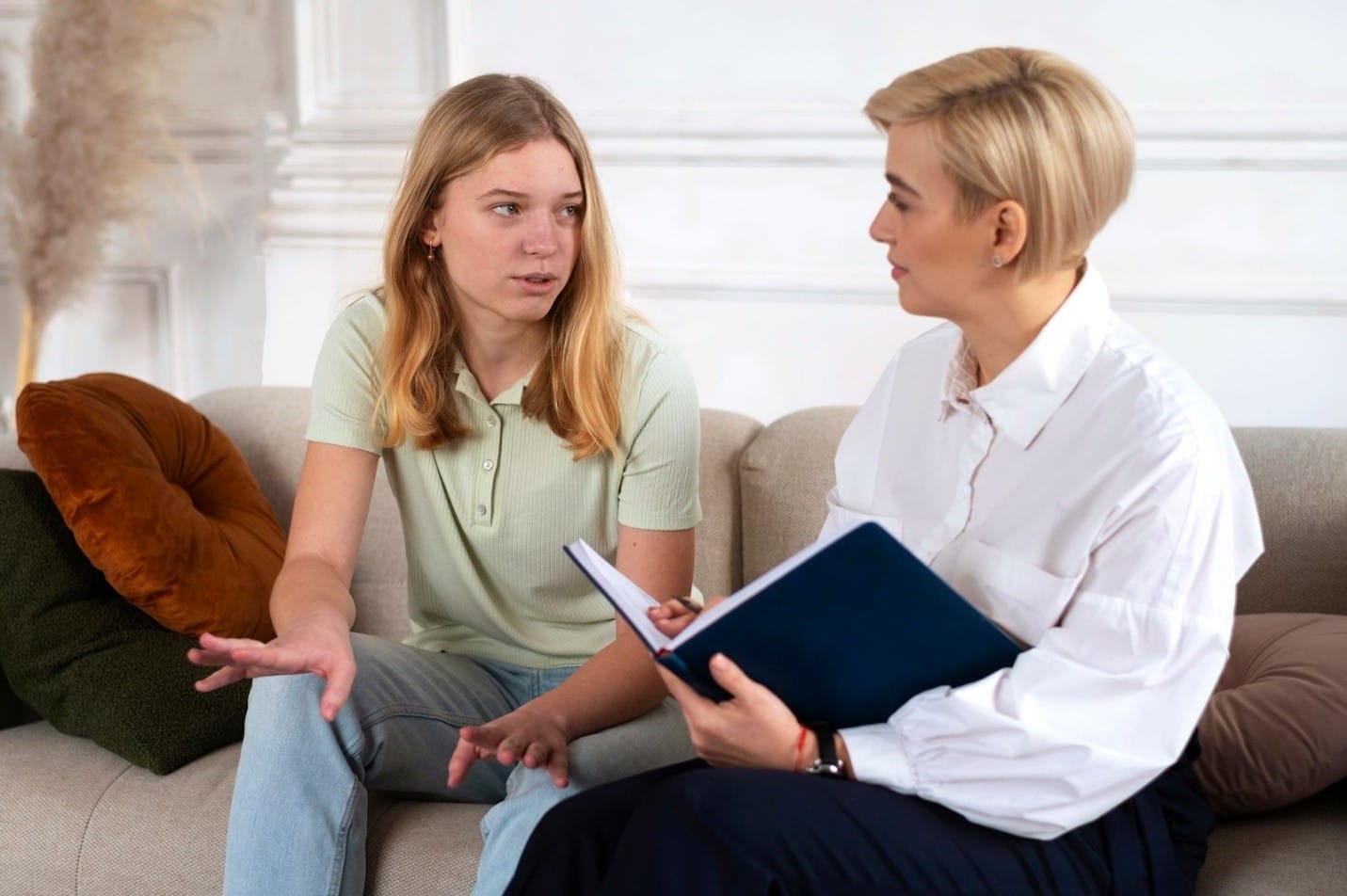
If they were not close to the victim, then all they truly need to know is that the person died.
People will be curious, but they are not owed your limited emotional energy.
Become comfortable with saying no.
Unfortunately, in spite of the best efforts of many, suicide happens. This leaves surviving loved ones to navigate a confusing and difficult aftermath.
If you are coming to this resource through the Bio-One website, it is likely you are in the very recent aftermath of a loved one’s death and are unsure of what should happen next. While loss like this is never easy, there are many professionals who have years of experience helping people in similar situations that you can rely on during this devastating time.

Many resources that help with the aftermath of a suicide launch right into how to cope with grief, but if you are still in the phase of trying to manage the logistics, you may need more direct information.
This section will deal directly with things pertaining to your loved one’s remains, belongings, and the physical scene of their suicide. If these details have already been taken care of or if the specifics are too difficult for you to think about right now, please skip to the next section.
Once the police, coroner, and/or medical examiner have released the scene, your loved one’s remains will be removed from the location of the incident and transported to a medical facility.

If you are the immediate next of kin but were not the person who discovered and identified the body at the scene, you may be asked to identify the body in person or through photographs. If the prospect is too traumatic for you, you can decline and ask someone else to do the identification.
If the cause of death is clear, the coroner’s office or medical examiner’s office will usually release the victim’s body to the family within 1 to 3 days, at which point arrangements can be made for the chosen funeral home to transport the body and make preparations for their funeral.

After the investigation is concluded, it is up to the property owner or the victim’s friends and family to take care of any cleanup that may need to happen at the scene.
Do not try to clean up the scene yourself. Any blood or fluids left behind after a death are a biohazard, and attempting to do the cleanup yourself can be dangerous and deeply traumatic.
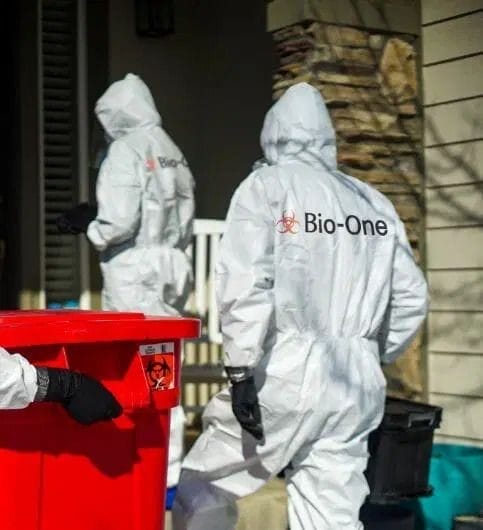
Homeowners insurance will usually cover cleanup costs, which can relieve one potential burden. Bio-One will take care of the insurance claim process for you in addition to handling the cleaning. We have all the equipment and expertise needed for the job, and we will treat the scene, the situation, and any belongings with respect and care.

At Bio-One we recognize that it can be an important part of the grieving process for some people to know exactly what is involved in cleaning up the scene.
Any unattended death (as opposed to an attended death that happens in a medical facility or under hospice care) generally requires some level of cleanup. The intensity of the cleaning required depends on how the person died and how soon after death their body was discovered.
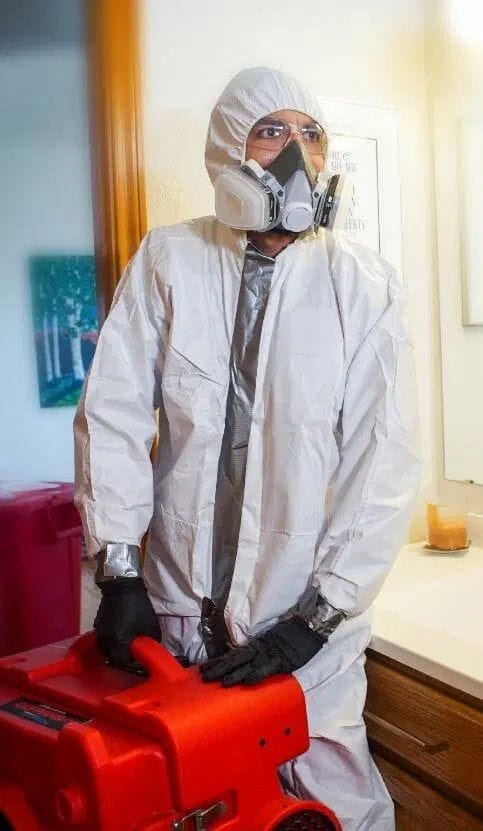
The nature of death and decomposition makes it so that cleaning up after a suicide is rarely an easy job. Blood and body fluids can quickly seep into furniture, carpet, and floorboards, causing massive damage as they putrefy.
It’s also important to know that the bio-matter involved in death cleanup can be dangerous for anyone without personal protective equipment. These situations require specialized deep cleaning and disinfection to remove all traces of fluids, soiled fabrics, bloodborne pathogens, and odors to make the area safe for habitation again.
At the same time, we are acutely aware that this cleanup is coming in the wake of incredible personal tragedy. While it’s important that the job be thorough, it must also be handled with as much care as possible toward the scene and any of the victim’s affected belongings. It is our goal to complete the job without inflicting further trauma on grieving loved ones.
The cleaning itself begins with a thorough inspection of the scene to assess what supplies will be needed, how much bio-hazardous material will need to be removed, and the extent of any damage that could be caused by decomposition.
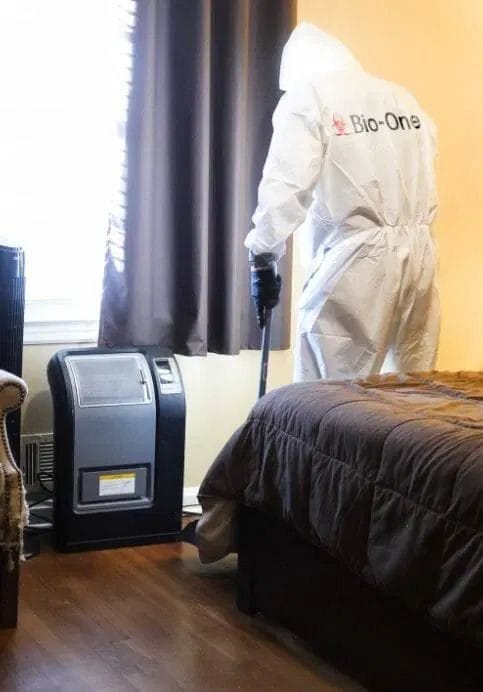
The next step is to clean and dispose of any visible blood, body fluids, and compromised porous items. We carefully follow OSHA guidelines to contain, disinfect, and dispose of all bio-matter properly in accordance with state laws to ensure the safety of everyone involved.
This stage can sometimes involve removing sections of soiled carpeting, floorboards, baseboards, and other household items to ensure that no hazardous material is left behind.

We will take care at this time to preserve any personal items that can be safely cleaned. Porous materials like clothing and stuffed animals can’t be truly disinfected, but upon request we will clean them to the best of our ability and return them to the family.
Once everything has been thoroughly cleaned and disinfected, we take care to get everything to a point where we can hand it off to contractors for restoration work. We will handle filing the claims with your insurance company to make sure the remediation process is underway.
We are there with our clients through every step of the process to make sure they are not left in the dark about anything that is happening to their loved one’s property or belongings.
While this may not help to ease the pain of losing a loved one, hopefully knowing you can leave the cleanup in the hands of seasoned professionals will ease some of the stress burden during this difficult time.
One of the most difficult moments in the aftermath of a suicide is having to inform the rest of the victim’s inner circle of the news. As painful as it was to discover the scene or to be told the news by someone else, if it is your responsibility to let others know, it can feel like experiencing the horror of those first moments over and over again.
Be sure to delegate. It’s an unpleasant task but a necessary one, and you will get through it more quickly if you have your immediate support system help you with delivering the news.

You can be direct, and if it’s too difficult for you to handle bearing the emotional fallout of each call, it can be a short one. The only people who need to be told directly are immediate family and the person’s closest friends.
Everyone else can be informed with a social media post. This will help mitigate some of the emotional drain of telling loved ones about the news. This post can be succinct. Whatever you have the capacity to say is fine for now, as long as you get the news out to the people who need to know about it.
You are then perfectly justified in muting all notifications on the post. People will have condolences and questions, but those can wait. Focus on what’s immediately important and return later when you have more emotional capacity.

There may be young children in the immediate or extended family who will need to be told. If this falls to your responsibility, wait until you have taken care of your own emotional needs enough to be at a point where you can be calm enough to tell them in an appropriate way.
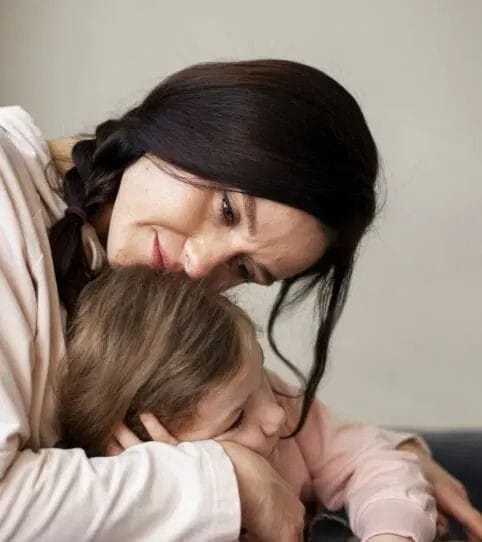
Children are capable of understanding a lot more than we give them credit for, death included, so you can be honest with them about what happened. Be sure to explain it in a way that is appropriate to their age, avoiding focus on the act itself, and prepare to answer any questions they have in a similar manner.
Assure them that they are not at fault in any way for the loved one’s suicide, especially if the victim was a parent or caretaker, and then encourage them to express how they are feeling with you.
Let them know that it is okay if they need to cry or be angry, and that you are there for them in whatever they need.

With the logistics of the direct aftermath out of the way, the last truly important thing to do is make sure there is some sort of memorial for the victim. Even if they would not want a full funeral, it’s extremely important for anyone experiencing grief to have the opportunity to honor and say goodbye to their loved one.
Most funeral homes will be able to help coordinate a memorial service appropriate for the culture and wishes of the deceased, though some families prefer to do the preparation and memorial themselves.
Whatever you choose to do, especially if you are spearheading the planning, remember to pace yourself and ask for help if needed. This is not the time to shoulder everything on your own.
The time leading up to the memorial and burial can be hectic, so it’s difficult to allow yourself time to process. As soon as your loved one is laid to rest, you will need to give yourself the time and space to grieve in whatever way you need to.
If you are struggling with thoughts of suicide or self-harm, you are not alone.
The number of people who experience suicidal ideation in the U.S. every year numbers in the millions. You are not selfish or a bad person for feeling this way.

Be assured that most people who experience moments of intense suicidal feelings are able to recover and live fulfilling lives.
Hold that in mind and keep reading. Let’s take a moment to take stock of your situation:
If you have already tried to self-harm today or are feeling intense suicidal urges, call 911 immediately or have a friend or family member get you to mental health urgent care or an emergency room.

If you have not yet tried to harm yourself but are feeling strong suicidal thoughts or urges to self-harm, please contact a crisis counselor right away:
Fully recovering from your suicidal feelings will require long-term help, but your focus right now should be staying safe through your current suicidal episode.
If you have not yet reached crisis point, here are the steps you should follow to stay safe while you weather the current storm:

If you are experiencing persistent suicidal ideation of any sort, reach out to someone you trust as soon as possible and tell them how you are feeling. Even if you are not likely to hurt yourself right now, having somebody who knows what you are struggling with will make it easier to get help.
You may not feel like there’s much the other person can do, or you may not want to worry them. Try to remember that your perception of your own worth is distorted when you are suicidal.
You are not a burden. You are worthy of help. The first and most important step to keeping yourself safe is to reach out to a friend, family member, or medical professional who can provide you with that help.

Once you have somebody you trust, get their help to remove anything dangerous from your presence. Your trusted person can hold onto any knives, firearms, pills, chemicals, or anything else you could use to harm yourself until you feel safe again.
This is easiest if you have a cabinet or safe where you can lock everything up and turn over the key to your loved one. But any means of keeping these items out of your hands is better than nothing.

Giving yourself a sensory distraction of some sort can help to calm the immediate impulse to self harm. Listen to music, take a walk, lay on the floor (yes, that can be enough), or pet an animal.
If the urge is acute, sensations that are intense but not harmful such as placing ice cubes on your skin can help to keep it at bay. If you just need to divert your attention until the worst of the feelings pass, something mundane and harmless like a movie, game, or craft might help keep your mind occupied until you feel safer.

If you are currently safe but feel your situation may escalate toward self-harm, work on creating a plan in case you enter crisis mode and can’t think clearly.
Save.org has provided this excellent safety plan template where you can write down the steps to follow and people to contact if you start going into crisis. Share this plan with your loved ones, doctors, trusted religious leaders, or anyone else you think might be able to recognize when you are in distress and can take action.

Once the episode has passed and you are in an okay place, you should try to secure some help toward your long-term recovery. It is time to make an appointment with a doctor or mental health professional so they can help you work toward feeling better.
If you are severely depressed, you may be unable to motivate yourself to go through all the necessary steps of scheduling and attending an appointment. It is okay to ask for help with this. You are not a burden. Don’t hesitate to lean on someone in your life to set up your appointment for you, and even to help you get there if necessary.

If financial hardship or other barriers to your seeking mental health treatment are already one of the contributing factors to your suicidal thoughts, do not let these instructions discourage you.
No matter your situation, there are resources for you on both national and local levels. Here are some of the options that may be available to you:

Most states have some level of community mental health services. These can usually be found through the Department of Human Services on your state’s website. Private non-profits can also offer free or sliding scale mental health treatment. A good place to start is your local YMCA or similar community center.

Many churches provide support resources for their congregations. Your church leaders may offer free individual counseling for those who need it. Some congregations may be willing to provide financial assistance to members who need help seeking treatment.
It is also very common for religious communities to sponsor support groups or group therapy. These are often open to the general public, so you do not need to be a member of the congregation or be religious to attend.

There are widely available resources online for people experiencing feelings like yours. Free crisis chat lines are obviously a good place to turn if you are in active distress.
For the process of recovery, many online therapy platforms offer reduced rates for those who are struggling financially. Online support groups can also provide a lot of connection and stability in times of need.
If you are a student, your university almost certainly has a resource center where students can receive mental health assistance. Whether they can provide you counseling on site or help you get in touch with affordable outside treatment, your school can be an incredibly helpful resource.

There are training clinics for every sort of medical practice, from family medicine to mental health, and they often operate at much more affordable rates than other clinics.
The training physicians there are in the final stages of earning their degrees and are overseen by more experienced attending physicians, so the standard of care provided will be exactly the same as anywhere else.
Most people don’t realize how often mental health clinics are willing to work with people who are financially insecure so they can still have access to the treatment they need. Especially if you have been struggling with thoughts of suicide, don’t hesitate to ask a nearby clinic if they can help you work something out.
Once your medical needs are taken care of and you are feeling a little more stable, you can begin to take other small steps to help in your recovery. Small things like reestablishing interest in your hobbies and improving your self-care habits can begin to make a huge difference in how you feel on a daily basis.

Larger steps involve things like finding a broader community of support among others with experiences similar to yours. These can help you progress in your recovery without shame—and provide plenty of support to fall back on in case things ever get difficult again.
Things may seem dire and hopeless right now, but they can and will get better. It is always okay to ask for help and to seek out a new support system if yours has failed you.
Once again, if you are in crisis, don’t hesitate to contact any of these resources:
No matter what you’re feeling right now, you will get through this with time and help. Life will begin to feel kinder and a lot more manageable.

The first step to suicide intervention is recognizing warning signs.
Once the signs have been recognized, it’s equally important that something is done about it. We’re here to help you understand what you can do, what will help, and what to avoid.
People who are struggling may not be very forthcoming about feeling suicidal. However, there may still be signs that might help loved ones know when to approach them with support or intervention.
Major warning signs someone may attempt suicide include:
These indicators are serious and require intervention, but may not be an immediate emergency. However, if the person is directly threatening suicide, posting on social media about death or suicide, or researching or seeking access to methods of suicide, call 911 immediately. *

* Threats of suicide should always be taken seriously, but if they are coming from an abusive partner—especially if you are trying to leave—take measures to secure your own safety first. A suicidal abuser may also try to harm their partner before taking their own life. Get to safety and contact emergency services.
Signs can be subtle, or even misleading, so don’t blame yourself if some things slip your notice and things come to a crisis point. Do your best to invest in your close relationships so you can more easily notice when something is off. This is especially important if your loved one is experiencing mental illness.

No matter the circumstances, understand that missing signs does not mean you have failed them.
It is sometimes the case that a person who has been depressed or in crisis for a long time will suddenly become uncharacteristically calm or upbeat if they have decided to attempt suicide. This can happen because they feel they have found a simple resolution to their problems and that an end to their suffering is in sight.
This is why it is so important for loved ones to be aware of the person’s feelings and behavior patterns so they might recognize when a sudden positive change in mood may be cause for concern.
If you have noticed warning signs in your loved one but they have not spoken to you directly about feeling suicidal, the next step is to speak to them. Starting a dialogue can feel awkward or invasive, but your willingness to talk may give the person permission to speak where they previously felt they couldn’t.

Some questions to ask to start a conversation may include:
These questions can help you assess how serious the danger is and respond accordingly.

The knowledge that a loved one may be at risk of suicide can be overwhelming. Whether they have directly confided in you about their struggles, or you have noticed concerning behavior from them, it can be difficult to know what to do next.
The first thing to know is that your intervention is already a big step toward keeping your loved one safe. Your response may not be perfect, but your willingness to act on their behalf is already going a long way toward bringing them the support they need during this time.

There are a few things to avoid when intervening with someone who is feeling suicidal.

Once you have talked to your loved one about their suicidal thoughts, it is important not only to take action, but to follow through no matter what. Even a person who is willing to seek help may not have the motivation or ability to do so on their own, so your own motivated support is crucial.
If the threat is not immediate, you can start by helping your loved one find a doctor or mental health professional to get them on a path to recovery. You may need to go so far as to make the first phone call, or even to take them to their appointment.
People suffering from severe depression have a difficult time following through on these things, so it may be up to you to make sure the initial steps toward seeking help are executed.

If your loved one has told you about their plans to take their life:
Don’t keep secrets. Even if it was told to you in confidence, and even if they are upset with you for telling, their safety is far more important.
Reach out for help. If you are not in a direct position to help and monitor your loved one, contact someone who is.

If they are a minor, contact parents and school counselors, as well as any other trusted adults in their life.
If they are an adult, contact partners, roommates, close family members, or any others who may be in a position to help you keep track of the person and find them help.

Remove access to dangerous items. If you are directly responsible for the person, you can help ensure their safety while you work on getting them help by staying aware of their location and restricting access to any means of self-harm (pills, weapons, access to heights or busy roads, etc.).
Though suicidal ideation and planning may be ongoing and persistent, the crisis period during which someone is likely to actively attempt suicide is usually short. Until it passes, this is the most important time to provide support and reduce access to lethal means.
Finally, if at any point you suspect the situation has escalated to become an emergency, don’t hesitate to call 911. You can also call the 988 Crisis & Suicide Prevention Lifeline for guidance on what to do in your specific situation.
Suicide can be prevented. The more quickly a person’s loved ones notice and take action toward helping them, the more likely they will be able to get the help they need. However, please remember, it is not your fault if your loved one dies by suicide. No matter the outcome, your efforts are important, and your support could save a life.
Suicide is an incredibly complicated issue.
There are an overwhelming number of contributing factors, and it affects every demographic regardless of age, race, or social class. Factors affecting certain communities may, however, lead to higher suicidal ideation and behavior within those demographics.

In the United States, suicide is the third leading cause of death among people aged 15-24, and it is estimated to claim the lives of roughly 125 Americans every day. Risk factors are many and varied. They include, but are not limited to:
Statistics can be misleading on which demographics are most at risk of suicide. Among the highest-risk groups overall (teenagers and young adults), females are almost twice as likely to attempt suicide but males make up the majority of actual suicides.

This is due to a handful of different factors, most significantly social stigma preventing many males from seeking help when experiencing distress.
The likelihood of a teenager or young adult attempting suicide also rises significantly if that person is a member of the LGBTQ+ community, especially if they are lacking sufficient family or community support.

The risk can be greatly reduced if a person is surrounded by family or friends who are openly supportive and affirming of their sexuality or gender identity. Even more so if medical and community resources for helping them understand and affirm their identity are widely available.
Overall, in the U.S. there are around 45,000 suicides each year out of 1.1 million yearly suicide attempts. There are many organizations dedicated to keeping that number on a steady decline, including:

Overwhelmingly, the best means of early suicide prevention are:
These methods are not guaranteed, and there is still a very long way to go in managing this complex and serious public health issue, but education and awareness are an important first step.

No matter how overwhelming it may feel, intervention IS effective, and the more we continue to do so, the more lives will be saved. If you or a loved one are currently struggling with thoughts of self-harm, please stop right now and dial 988 on your phone, or text HOME to 741-741 to speak with a crisis counselor.